A Jumbo Mine and a jumbo political impeachment
Sulzer brothers both served in Congress, promoted Alaska statehood
By DAVE KIFFER
May 24, 2020
Sunday PM
(SitNews) Ketchikan, Alaska - What does an old ghost town on Prince of Wales Island have to do with the only New York Governor to be impeached? Nothing. And everything.
"Sulzer" still appears on maps of Hetta Inlet but there hasn't been a community there for decades. The one-time cannery site was also the location of the headquarters of several copper mines in the Copper Mountain and Jumbo Mountain area. In 1910, the population for Sulzer was listed at 50 in the US census. The community had two stores, a small hotel, a post office, a school and even a wooden tennis court.
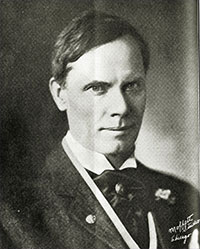
William Sulzer
Governor of New York January 1, 1913 - October 17, 1913
Courtesy Wikipedia
www.wikipedia.org
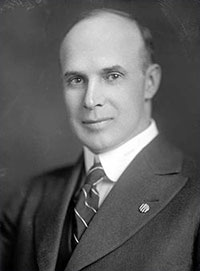
Charles August Sulzer
A delegate to the United States House of Representatives from the Territory of Alaska.
In office March 4, 1917 – January 7, 1919
Courtesy Wikipedia
www.wikipedia.org
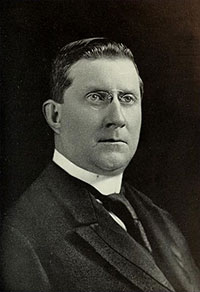
Charles F. Murphy
Silent Charlie", "Boss Murphy"
An American political figure, and longest serving Head of New York City's Tammany Hall from 1902–1924.
Courtesy Wikipedia
www.wikipedia.org
|
The Alaska Industrial Company operated the mines and the AIC was run by William Sulzer, an ardent promoter of Alaska, but also the only New York Governor to ever be impeached, primarily because when he became governor he promptly turned on the "machine" that got him elected and the machine got even.
Sulzer was born in Elizabeth, New Jersey in 1863, the mid point of the Civil War. His father was a civil engineer who lost his position during a financial panic and became a farmer to survive, acccording to Sulzer biographer Mathew Lifflander.
According to Charles Hawley's entry on Sulzer in the Alaska Mining Hall of Fame website he learned about geology early in life.
"While exploring the nearby fields and brooks, he collected and tried to classify rocks and minerals that he picked up in the neighborhood," Hawley wrote. "Later he speculated that this early activity led to an interest in mines and geology."
Lifflander - in his 2012 book "The Impeachment of Governor Sulzer: A Story of American Politics" also noted young Sulzer's interest in the natural world.
"An amateur geologist all his life, the study of rocks was most appealing to Sulzer," Lifflander wrote. "Drawing on his experience he would say 'the rocks never lie' and he considered geology to be the 'truthful record of the history of our planet.' "
Sulzer also displayed, early on, his interest in far away places that would eventually lead him to Alaska.
When he was 13, he ran away from home to join the Forepaugh's Circus, feeding and watering the elephants for $3 a week as the circus traveled through Pennsylvania and New York, according to Lifflander.
Then he signed on as a cabin boy on a ship that sailed to South America, the William H. Thompson. A year later, he returned home for a year and then ended up in New York City where he worked as a clerk for a wholesale grocer and continued his education at Cooper Union in the evenings, according to Hawley.
In New York, he caught the attention of the organization that would eventually shape his life, in good ways and bad.
Tammany Hall was the Democratic political machine that was a major player in New York politics from the 1790s to the 1960s. By the mid 1800s, it had a stranglehold on Manhattan politics but was also becoming synonymous with greed and political corruption under a series of "Bosses," most notably the infamous William "Boss" Tweed. By 1900, Tammany - still in power primarily because it aligned with the large number of Irish immigrants - began calling itself the party of "reform" and William Sulzer was a big part of that.
Sulzer had been an acolyte of Tammany official John Reilly. Reilly encouraged Sulzer to use his powers of oration and become a lawyer and political leader. In 1889, Sulzer was elected to the New York Assembly and became majority leader and Speaker of the Assembly by 1893.
That was an important year because Sulzer made his first visit to Alaska, making a swing through Southeast Alaska and then heading north to explore mining operations on the Bering Sea coast. In 1895, he was elected to Congress and in 1899 he came back to Alaska again, this time noting how the mining interest from the Klondike Gold Rush was spilling over into the territory.
Meanwhile, a miner from Montana, Aaron Shellhouse, was exploring the good copper prospects on Southern Prince of Wales Island, according to Pat Roppel, in a 1983 article that she wrote about Sulzer for the Alaska Journal.
Shellhouse, Roppel noted, was more interested in finding new mines than developing the one's he had already located and that played right into Sulzer's plans to take over and develop already staked properties.
"In 1897, Shellhouse worked his way up a nameless creek into a short U-shaped valley on the south side of Hetta Inlet," Roppel wrote. "The valley ended in a steep-walled basin and near the head of the basin, he discovered a copper vein which could be traced up the mountain slope for a distance of nearly 1,000 feet. The vein was 10 to 25 feet wide and Shellhouse staked claims which he named Jumbo. The mountain and the creek soon became known as Jumbo Mountain and Jumbo Creek."
While copper was not as sexy a mineral as gold and silver, it was much more plentiful than either in Southern Southeast. But it also suffered from a much more unstable pricing and it wasn't unusual for miners to spend a lot of time and money developing a copper lode - with its numerous underground shafts - only to find that the price had crashed and it was not worth pulling the ore out of the ground after all. In the first two decades of the 20th Century, prices were high and copper was mined in several areas. After World War I, the price dropped and all those mines - and the towns that served them - dried up.
Back in 1897, Shellhouse proceeded to sell off shares of his Jumbo Mine in order to finance new explorations. His first partner was the Rev. John Gould, the Presbyterian missionary at the nearby Haida village of Howkan. In 1899, on his second visit to Alaska, Sulzer bought into the property. Later Gould would sue Sulzer over the transaction and unfriendly New York newspapers would have a field day over the story of Sulzer allegedly bilking the Alaskan missionary, according to Lifflander.
Sulzer, Roppel wrote, clearly was interested in making a mark in the unorganized territory.
"He became known as 'Sourdough Bill' and he joined the Arctic Brotherhood soon after it organized in Skagway," Roppel wrote. "He became a member of the Igloo No. 1 of the Pioneers of Alaska at Nome. He joined the Walrus Society, the Yukon Club, the Tanana Club, the Klondike Stampeders and other fraternal groups of old timers. And as he traveled throughout the territory he became extremely interested in Alaska's problems."
Later, in 1912, the Seattle Times would call him "Alaska's Best Friend in Congress" and credit him with helping bringing formal government to Alaska in 1912 and the federally-financed Alaska Railroad in 1913. In 1906, Sulzer introduced the first legislation to move Alaska toward statehood. It went nowhere, but Sulzer was able to convince Congress to move ahead on eventually creating the first Alaskan Territorial Legislature.
After Sulzer purchased the Jumbo claims from Shellhouse and Gould, he created the Alaska Industrial Company. Sulzer was more of an organizer and financial operator than a miner and - after cycling through several incompetent mining engineers according to Roppel - he soon realized he needed someone he could trust running the mining operation.
Enter Charles Sulzer, William's younger brother. Charles Sulzer had been born in 1879, and served in the Spanish American War. He was attending West Point in 1901 when Williams convinced him to drop out and move to Alaska manage the Jumbo and other mines. Charles had developed engineering skills growing up.
The hillside below the main mine site was too steep to build any sort of community, so Charles Sulzer picked a location where there was flat land three miles further north in Hetta Inlet, near Gould Island and Portage Bay. That location was also close to an overland supply route, where supplies could be brought from Ketchikan to Cholmondeley Sound and then carried four miles overland. It was a much shorter and safer route than dealing with the frequent bad weather at Cape Chacon at the southern tip of the island. Charles Sulzer had plans to built a narrow gauge railroad across the portage from Cholmondeley as more mines developed in the area, but it never became financially feasible.
"The portage was used by people on foot and horseback, carrying the mail to post offices at Sulzer and Coppermount on Hetta Inlet," Roppel wrote. "From those points it was distributed to the mining camps of Jumbo, Conner, Green Monster, Corbin and Copper City, to the Deer Bay Saltery, the Hetta fish hatchery, the Klinkwan Indian Village and the Hunter Bay salmon Cannery."
Charles Sulzer also built a elaborate 8,500 foot aerial tramway to bring the ore to tidewater.
"Under Charles Sulzer's direction, the Jumbo copper mine monthly production increased from 1,000 tons to 2,500 tons of high grade ore," Hawley wrote. "The Jumbo mine operated continuously from 1907 until 1918 and was the second largest producer of copper in Southeast Alaska."
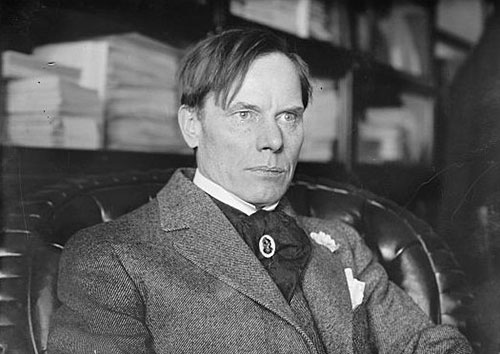
William Sulzer was the 39th Governor of New York
Resigned as Governor of New York in 1913 in disgrace.
He was the first and so far only New York governor to be impeached. He broke with his sponsors at Tammany Hall, and they produced convincing evidence that Sulzer had falsified his sworn statement of campaign expenditures.
Courtesy The Bowery Boys, New York History
www.boweryboyshistory.com |
In his 1951 history of mining in Alaska, John Bufvers estimated that Jumbo mined more than $2 million worth of copper in its decade and also pulled significant amounts of gold and copper out as well.
The Jumbo Mine had begun shipping out significant amounts of copper in 1907 and operations reached their peak around 1910. That was when the town of Sulzer was also at the height of its brief "boom."
According to a story in the Ketchikan Miner on July 14, 1911, Sulzer put on a Fourth of July Celebration worthy of a much larger community.
"The Declaration of Independence was read by Charles Sulzer, Another fine oration was delivered by Dr. A.B. Tubbs," the newspaper noted. "In the athletic events, gold, silver and bronze medals were offered as prizes and some contests had as many as thirty persons participating. There was the 100-yard race and a shooting match between the Sulzer Gun Club and the Jumbo Mine Club. In the obstacle race, competitors were sewed up in sacks and the greased pole climbing created much excitement. In the nail-driving contest, eight brave ladies came forward and most of them got bruised fingers. The steamer "Meteor" being in port, a tug of war was arranged between the freighter's crew and the Jumbo miners - the miners winning by a narrow margin. In the evening there was dancing with music by the Sulzer Orchestra and a fireworks display at dusk."
Meanwhile, William Sulzer was working to improve things politically in Alaska. He was a strong supporter of Alaska's position during the 1899-1903 Boundary Debate and resurvey.
"Sulzer believed that England wished to reopen the boundary issue to claim more gold-favorable ground for its Dominion, Canada,:" Hawley wrote. "Sulzer chastised President William McKinley for not taking a harder line on the issue and became a well-known figure by his forceful stand in favor of Alaska."
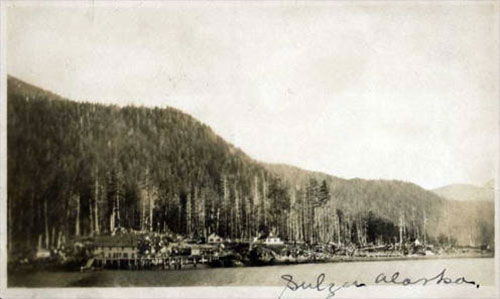
Mining Camp at Sulzer, Alaska ca 1910
Louise Carey McConnel photograph collection, ca. 1908-1912
Courtesy Alaska Digital Archives ASL-P104-044 |
William Sulzer was also a strong proponent for Home Rule for Alaska. He supported both Alaska having its own territorial legislature as well as a delegate to the United States House of Representatives.
He also promoted conservation of the fur seals and salmon stocks and directed federal money to build Alaska infrastructure. One of his last acts as a Congressman was to sponsor and push through funding for a railroad from Seward to the coal fields in the Matanuska Valley.
Meanwhile, he continued to keep an eye out for mining interests and was involved in the development of mines in the Wrangell-St. Elias area and the Brooks Range. He would continue to be involved in those areas until his death in 1941, long after the Jumbo Mine had closed up.
"William Sulzer never tired of promoting Alaska," Hawley wrote. "Beginning in the early 1900s, he (frequently) delivered a speech titled 'Alaska, the Wonderland of the World.' It changed in detail over the years as new data became available but basically it was a statistics-packed promotional piece delivered by a skilled orator."
While Sulzer's fellow congressmen grew weary of his promotion of Alaska, it remained popular with Alaskans, Hawley noted.
In Congress, Sulzer also was involved in early efforts to create a graduated income tax, form the Bureau of Corporations to enforce anti-trust laws, increase the salaries of mail carriers, and provide pensions for the widows and orphans of Civil War veterans.
But then in 1912, William Sulzer decided to leave Congress and run for Governor of New York.
He had wanted to run for the office before, but had been blocked by the then Tammany Hall boss Charles F. Murphy. In 1912, there were strong Republican and reform candidates on the ballot and Murphy turned to Sulzer to keep the office in Democrat hands. Sulzer had always been extremely strong in the precincts of the lower East Side of Manhattan and Tammany believed those votes were crucial.
"Murphy, with some doubts on the reliability of Sulzer to follow the party line, allowed (him) to head the Democratic ticket and Sulzer was elected Governor of New York by a substantial margin," Hawley wrote.
Intially, Sulzer and Murphy collaborated on a mildly reformist agenda, but then Sulzer turned toward fighting more significant government corruption. He strongly favored direct election for a variety of lower level political positions that Murphy had previously had the power to fill with appointments.
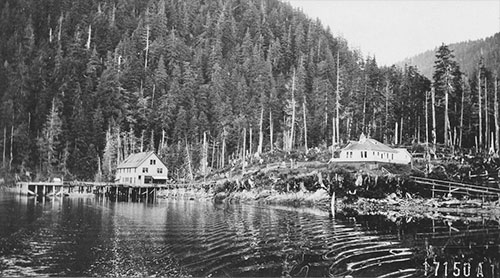
Sulzer, Alaska was a small community on the shore of Hetta Inlet on Prince of Wales Island. The community centered on a copper mine established by William Sulzer, operated by the Alaska Consolidated Mining and Smelting Company, the Jumbo Mine was active from 1907 to 1918 and was one of Alaska's largest copper producers. Charles August Sulzer, brother of William and delegate to the United States Congress from the Territory of Alaska, lived in Sulzer when he took ill in April 1919 and died while on board a boat en route to Ketchikan.
Courtesy Wikipedia www.wikipedia.org |
"In effect, Sulzer challenged Murphy for control of the Democractic party in New York, a battle that Murphy was not going to lose and one that led to Sulzer's impeachment," Hawley wrote.
A man of his times, Sulzer hadn't always played by the rules. Murphy made him pay for that.
"Sulzer's impeachment was messy and, more than 100 years later, is still controversial," Hawley wrote. "While his votes were never for sale, Sulzer freely used campaign funds for his personal needs and desires and thus was in a vulnerable position. Less than a year after his election, Sulzer was removed from office."
In his 2012 book "The Impeachment of Governor Sulzer: A Story of American Politics" longtime New York politico Matthew Lifflander said that Sulzer was ill-treated in his lifetime.
"Reacting to his impeachment, Governor Sulzer said that 'posterity will do me justice,' " Lifflander wrote. "Actually it did. Despite his personal flaws, Sulzer led an interesting and useful life, leaving a productive and progressive legislative record as an assemblyman, congressman and governor whose achievements enriched the lives of the people who elected him and those who came after."
After the impeachment, Sulzer was reelected to the New York Assembly, where he took some measure of revenge in making sure that Murphy's influence over the Assembly waned. But then Sulzer decided not to run for a second term, preferring to concentrate on his legal practice and his Alaskan operations.
In the meantime, his brother Charles was elected to the first Alaskan Territorial Legislature in 1913 where he sponsored Alaska's first workers’ compensation laws.
Charles Sulzer was then elected as the Alaska Delegate to the US Congress in a hotly contested election against Judge James Wickersham. Sulzer was then re-elected in another close election (decided by 30 votes), but before he could return to Washington DC, he became seriously ill while at Sulzer and died while being taken by boat to Ketchikan.
Charles' death, at age 40, was the last straw for the Jumbo mine and the town of Sulzer. William Sulzer sold off the mine and townsite. The post office, which had been operating since 1901, closed down. The property has passed through the hands of several larger mining companies in the last century, but the copper market has never been strong enough to overcome the shipping issues related to producing copper in Southeast Alaska.
In his 1951 history of mining in Alaska, John Bufvers said that, in general, the Sulzers must have been good employers because many of their employees stayed with then the entire time the Jumbo Mine operated, an unheard of situation at in an industry that was so transitory.
"Ketchikan owes much of it start to the Jumbo Mine for a great many of the present old timers (in Ketchikan) were once employed at the mine and quite a few are still around town," Bufvers wrote in 1951, mentioning such then prominent locals as Duncan Campbell, B.D. Stewart and Chris Copstead.
William Sulzer continued to sing Alaska's praises for the rest of his life. When he died in 1941, the New York Times noted "if Sulzer had been docile to Charles F. Murphy ... the use (of the campaign contributions) would probably have never been noted and he might have lived and died in public honor."
The Ketchikan-based Alaska Fishing News wrote warmly of him on Nov. 26, 1941
"Sulzer was always a man of vision and always active in the interests of Alaska," the Fishing News noted. "He made war on long-distance bureau control of Alaska and declared statehood as the remedy. There is a warm spot in the hearts of all old time Alaskans for Bill Sulzer."









